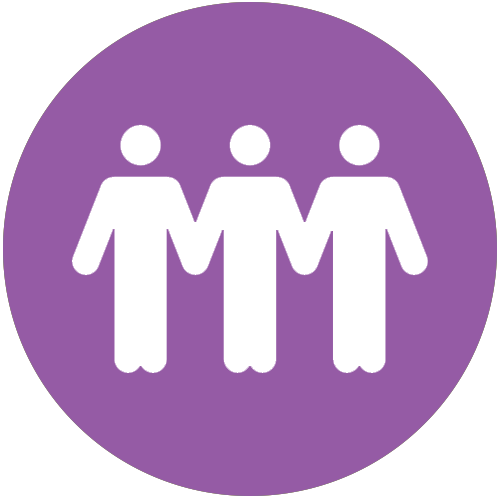What are Evidence-Based Programs?
Evidence-based programs refers to the quality of the program being offered. To be called Evidence-based, a program has to meet a series of rigorous standards that show it is effective. Research of the program must illustrate that it actually helps children and families meet their treatment goals.
Evidence-based refer to programs that:
- Have a book, manual or other available writings that specify the components of the practice protocol and describe how to administer it
- Have no first-hand basis suggesting risk of harm
- The risks to participants are reasonable in relation to the potential benefits to participants. The benefits of these services outweigh the possible risks
- Have reliable and valid outcome measures
-
Are administered consistently and accurately across all those receiving the practice
- Each child/family will receive the same foundational treatment
Evidence-Based Programs
The federal Administration for Children and Families (ACF) has contracted with Abt Associates to determine which prevention services and programs will be designated as evidence-based under Family First and to create a Title IV-E prevention-services clearinghouse. To be eligible for reimbursement, services must be described in state prevention plans, components of the service must be outlined in a manual, and the service must show a clear benefit. In addition, services must meet one of the following thresholds:
 Well-Supported
Well-Supported
- Improved outcomes must be based on the results of at least two studies with non-overlapping analytic samples
- The studies arecarried out in a usual care or practice setting
- Earned a rating of moderate or high on study design and execution
- At least one of the studies must demonstrate a sustained favorable effect of at least 12 months beyond the end of treatment on at least one target outcome
 Supported
Supported
- Improved outcomes must be based on the results of at least one study carried out in a usual care or practice setting
- Earned a rating of moderate or high on study design and execution
- Demonstrates a sustained favorable effect of at least six months beyond the end of treatment on at least one target outcome
 Promising
Promising
- Improved outcomes must be based on the results of at least one study
- Earned a rating of moderate or high on study design and execution
- Demonstrates a favorable effect on at least one target outcome
Virginia’s Family First Evidence-Based Services
Virginia’s prevention plan includes the following programs from the Title IV-E Prevention Services Clearinghouse. Federal title IV-E funds may be used for the following evidence based services for children at imminent risk of entering foster care and their parents or kin caregivers.
Program/Service |
Program/Service Rating |
Program/Service Area |
|---|---|---|
| Functional Family Therapy | Well-Supported | Mental Health Prevention/Treatment Service |
| Multisystemic Therapy | Well-Supported |
Mental Health Prevention/Treatment Service
Substance Use Disorder Prevention/Treatment |
| Parent-Child Interaction Therapy | Well-Supported | Mental Health Prevention/Treatment Service |
To locate evidence based service providers in your area please click the following links:
- Functional Family Therapy service providers
- Multisystemic Therapy service providers
- Parent-Child Interaction Therapy clinicians
Some service providers may need to make changes to the services they offer to ensure that they are evidence-based in order to receive or continue receiving federal funding for serving this population.
Virginia promotes all evidence based services, from a variety of well-known national clearinghouses and encourages the use of other funding sources for these programs as we seek to expand the selection of evidence based services for federal funding in our prevention plan in additional phases of implementation. Providers in Virginia that offer the evidence based services listed above will need to establish contracts with local departments of social services to receive reimbursement for services. The contracts ensure requirements around federal reporting and fidelity monitoring.
Why is this Important?
Family First's strategic priority is to advance the implementation and sustainability of evidence-based, trauma informed services that appropriately and effectively improve child safety, ensure permanency, and promote child and family well-being. While many of the services we offer have positive outcomes, evidence-based programs are distinctly different in that they are based on research studies.
Evidence-based programs have demonstrated positive outcomes, and they provide a framework and structures for service providers in the delivery of their service. As we implement Family First, we know that the driving force of federal funds, is the impact services that are supported by research, will have on increasing child and family wellbeing and reducing unnecessary placement of children into foster care.
Resources/Training Opportunities
As VDSS works to implement Family First in Virginia, and as all of Virginia’s child- and family- serving agencies promote the shift towards evidence based services, we encourage providers to ensure they are providing an array of evidence based services for local communities.
CALL TO ACTION
Virginia Department of Social Services is looking to expand evidence- based services (EBS) that are eligible for title IV-E funding. Partnering with the Center for Evidence Based Partnerships in Virginia (CEPVa), this exciting opportunity will expand the evidence-based service array to meet the needs of Virginia’s families. Funding is now available for training for specific evidence-based services. These models have been reviewed by the Title IV-E Prevention Services Clearinghouse and have been rated as “Well-Supported”. A Request for Applications (RFA) is available for providers to apply to receive training in the following EBS:
Service providers are encouraged to apply, the RFA can be found here. To review a recording of the Evidence Based Programs Training Funding Information Session that was held on February 4th, 2022 or access resources from the presentation please click on the links below:
- Recording
- PowerPoint
- EBP One-Pager
- FAQs
- RFA Letter of Support
- CEPVa Needs Assessment and Gaps Analysis